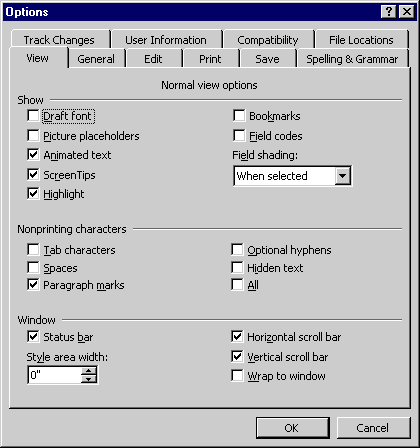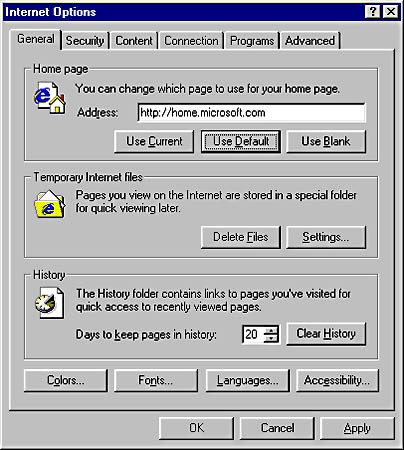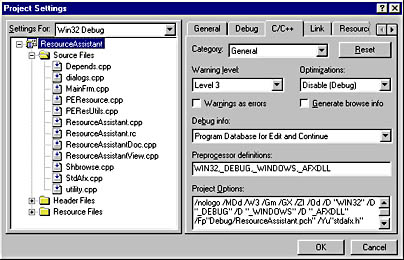Power vs. Simplicity
Once you've decided what to make configurable, you need to determine how to configure it. For explicit configurations, this usually involves some type of property sheet. The Options property sheet used in Microsoft Word is fairly typical:

This property sheet is notable in that it reaches just about the right limit for the maximum amount of complexity you want in a single property sheet. Any property sheet with more than two rows of tabs is clearly too complex.
Another interesting example is the Internet Options property sheet in Microsoft Internet Explorer 4.0 (below). This property sheet is unusual in that few options are set directly in the property pages themselves. Rather, the typical page has buttons that display other dialog boxes and property sheets, many of which have buttons that display still more dialog boxes and property sheets. While this technique reduces the number of tabs in each dialog box, it also makes it difficult to tell what the settings are. You have to visit a lot of dialog boxes to review all the settings. This technique works for Internet Explorer only because the program has so many options and they are not homogeneous. Putting all of them in a single property sheet would not be practical. However, you should probably avoid this approach in your programs.

Yet another interesting example is the Project Settings property sheet used by Visual C++. The project settings are so complex that in addition to a multiple-tab property sheet—with so many tabs it needs a scroll bar!—it also needs a combo box and a list control just for the user to select which object to display. (This complexity is necessary for the program, however, so the mechanism isn't as bad as it sounds.) The Visual C++ Project Settings property sheet will be discussed in detail later in this chapter, in the section titled "Case Study: Visual C++ Project Settings"

When selecting a user interface for your program options, the most important thing to keep in mind is the unavoidable trade-off between power and simplicity. While power is nice, simplicity is always better. Why? Because simple configurations get used and complex ones do not. Unless your program is intended exclusively for advanced users, you should favor simplicity over power.
TIP
Simple configurations are better than powerful ones.
EAN: 2147483647
Pages: 334